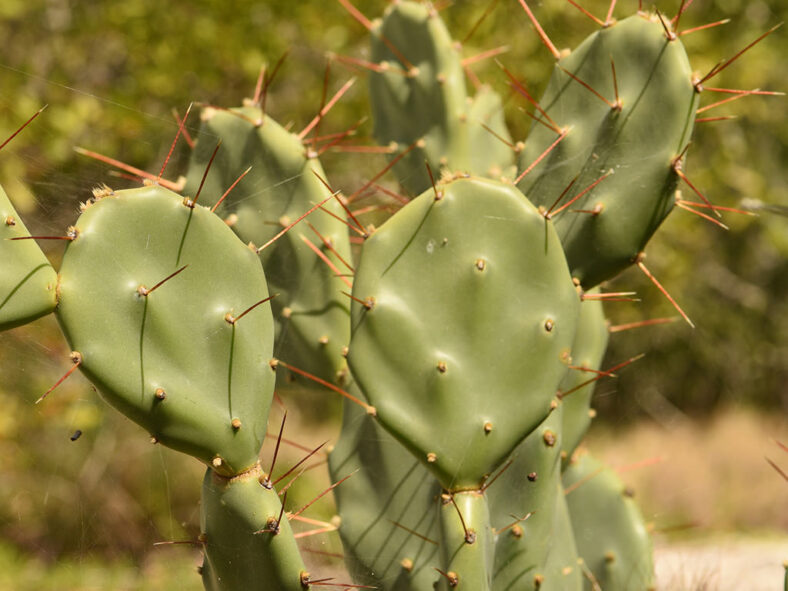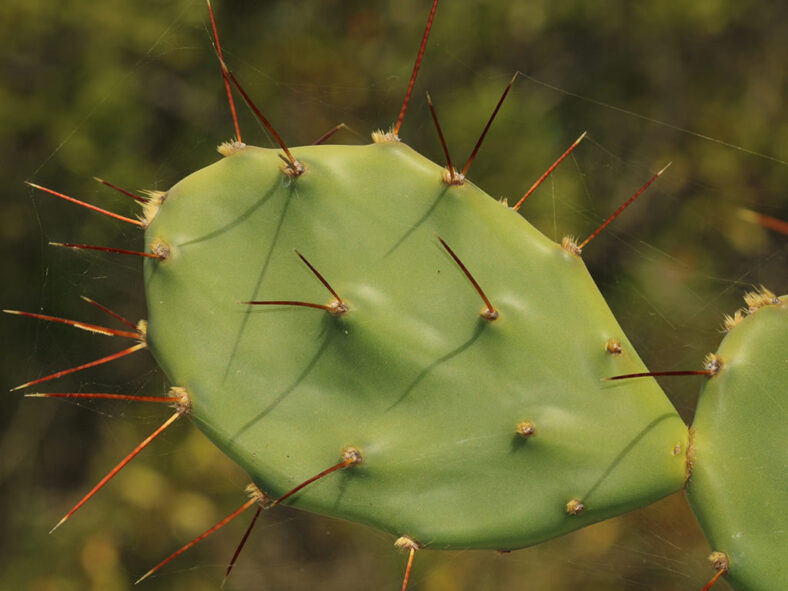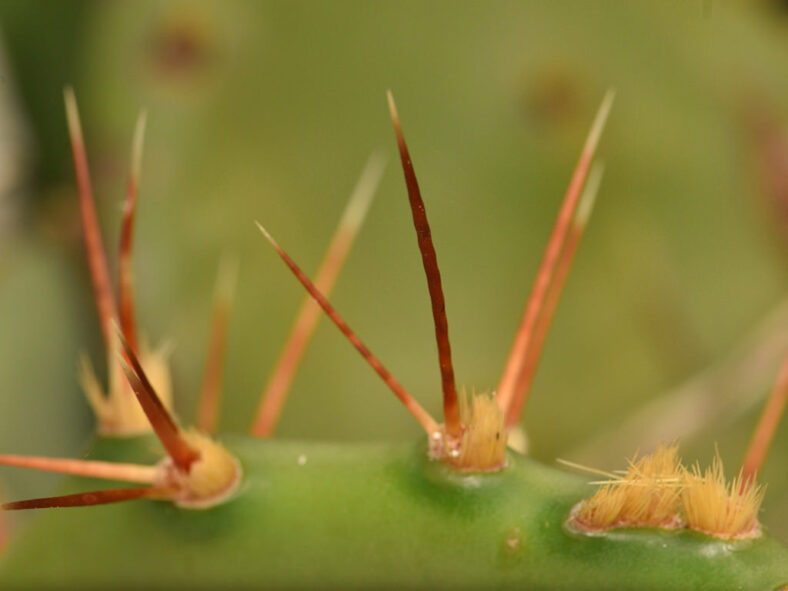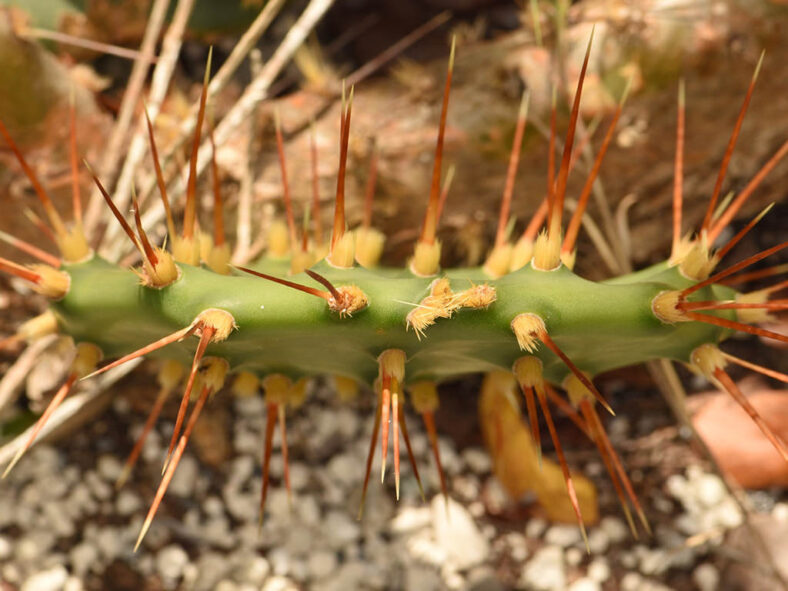Opuntia zebrina is not recognized as a separate species and is treated as a synonym of Opuntia dillenii. Although they have similarities, Opuntia zebrina is smaller and often has fewer spines than Opuntia dillenii. Additionally, the unique banded spines are characteristic of Opuntia zebrina.
Scientific Name
Opuntia zebrina Small
Accepted Scientific Name
Opuntia dillenii (Ker Gawl.) Haw.
Scientific Classification
Family: Cactaceae
Subfamily: Opuntioideae
Tribe: Opuntieae
Genus: Opuntia
Etymology
The specific epithet "zebrina" (pronounced "zeb-REE-nuh") means "with stripes like a zebra" and refers to the spines of this plant that are banded yellowish-brown and dark brown.
Origin
Opuntia zebrina is native to the United States, specifically to the Florida Keys, a chain of approximately 60 islands off the southern coast of Florida.
Description
Opuntia zebrina is an erect or spreading shrub with branches consisting of ovate to inversely ovate segments, commonly called pads. This cactus can grow up to 3.3 feet (1 m) tall. The pads are green to gray-green, with the lower areoles lacking spines and irregularly spined upper areoles. Each areole also has a tuft of brown glochids. The spines are needle-like and banded in yellowish-brown and dark brown, measuring about 1.6 inches (4 cm) long. Occasionally, pads may have only one spine on the surface, while 2 to 3 spines can be found along the edges.
From summer to mid-fall, Opuntia zebrina produces large yellow flowers. Its pear-shaped fruits range from reddish to purple and contain yellowish-brown seeds.

How to Grow and Care for Opuntia zebrina
Light: Opuntia zebrina thrives in full sun, but some shade during midday and afternoon can prevent sunburn in hot climates. When grown indoors, it works best in a window that receives sunlight for 6 hours a day.
Soil: This cactus requires a well-draining soil mix. You can use a commercial cactus potting mix or create your own.
Temperature: Opuntia zebrina is highly tolerant of high temperatures and prefers cooler temperatures in winter. It grows best in USDA Plant Hardiness Zones 9a to 11b, with average minimum winter temperatures ranging from 20 to 50 °F (-6.7 to 10 °C).
Watering: From spring to fall, water moderately and let the soil dry out completely before watering again. In most areas, rainfall will be enough for established plants. If potted, never let the container sit in water. Suspend watering during the winter.
Fertilizing: Opuntia zebrina does not need fertilizer when planted in the ground. However, if grown in a container, it will benefit from fertilizing during the growing season. Apply a water-soluble fertilizer. Suspend feeding during the winter when the plant goes dormant.
Repotting: Repot only when the cactus becomes potbound or is too large and unstable in its container. Choose a slightly larger container with drainage holes at the bottom. The best time for repotting is late winter or early spring.
Propagation: Opuntia zebrina can be propagated by stem segments or seeds. The easiest method is using stem segments, which yields faster results. For best results, take the stem segments in early summer and sow the seeds in late spring.
Learn more at How to Grow and Care for Opuntia.
Toxicity of Opuntia zebrina
Opuntia zebrina is not toxic to humans or pets. However, it is best to keep this plant away from pets and children, as its harmful spines and glochids may cause skin irritation.
Links
- Back to genus Opuntia
- Succupedia: Browse succulents by Scientific Name, Common Name, Genus, Family, USDA Hardiness Zone, Origin, or cacti by Genus
Photo Gallery
Click on a photo to see a larger version.


